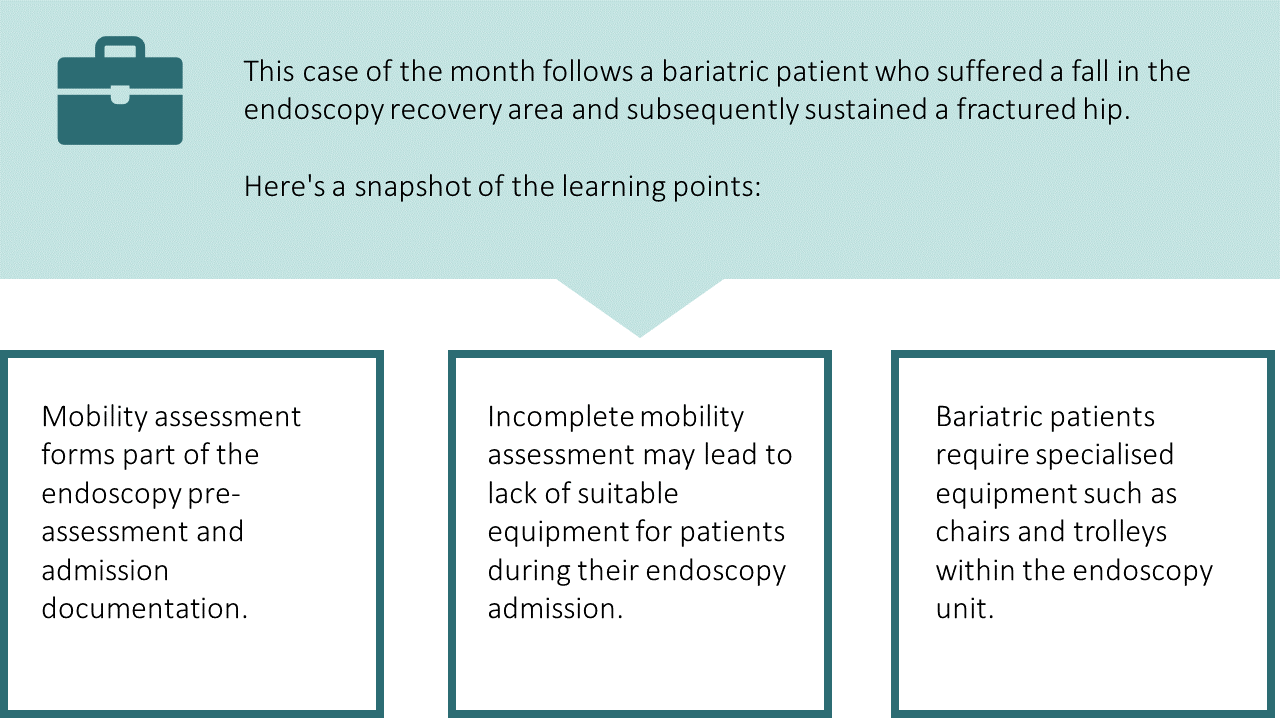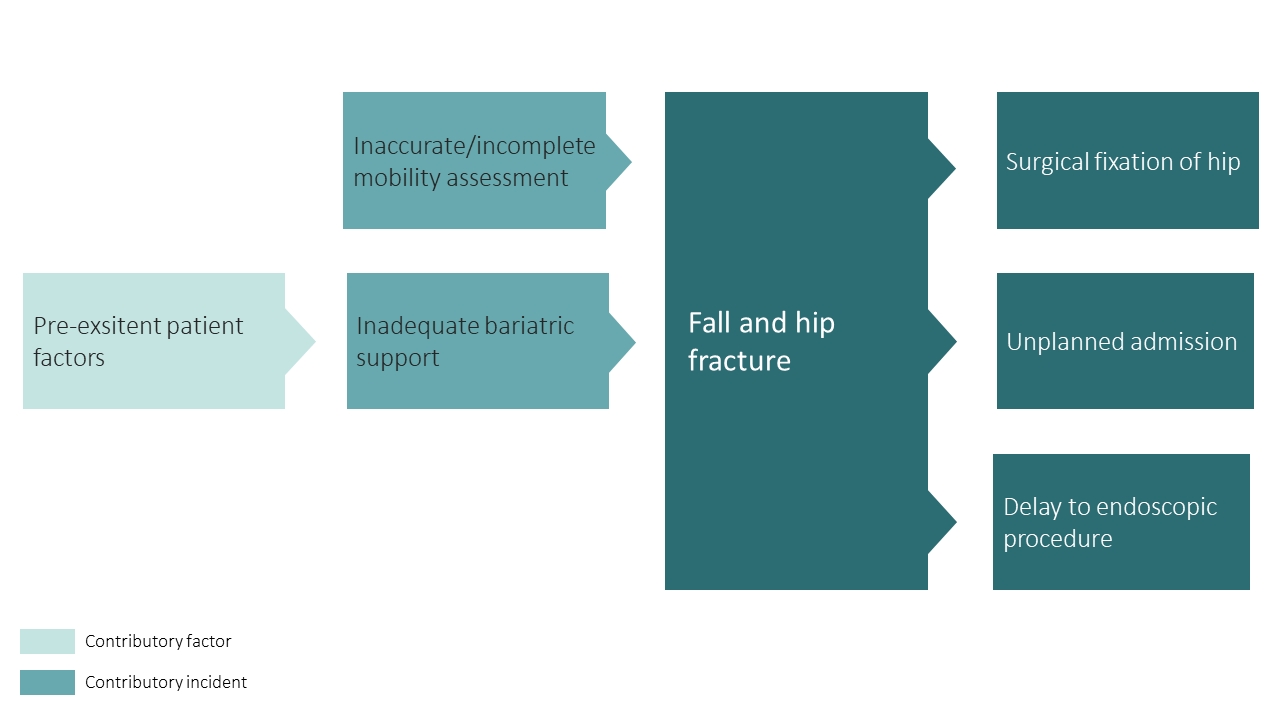Case of the month: January 2021 - the naughty chair
About this case study

Download the PDF version and share this for discussion with your team!
Case synopsis
A middle-aged patient attended for a flexible sigmoidoscopy. The patient had a body mass index (BMI) above 50 and had walked into the unit aided with a stick. The patient suffered a mechanical fall 5 weeks previously in which they had injured their hip.
A nurse assessed the patient using the unit’s endoscopy assessment tool. The mobility assessment indicated that the patient was fully mobile and did not require assistance with walking. No other information was documented. Following admission, the patient walked to the recovery area with the aid of a stick.
In recovery, the patient sat on a standard high back armchair which was not arranged against the wall. A nurse asked the patient if they were comfortable in the allocated chair and offered them a more appropriate chair. The patient declined the offer. Shortly after, the patient wanted to use the toilet and declined assistance with walking. However, when the patient attempted to stand, the chair moved backwards and the patient fell to the floor. The patient was unable to move their leg and complained of excruciating pain. The patient had sustained a neck of femur fracture. The patient was subsequently admitted and had surgical fixation of the fracture.
Safety incidents and contributory factors
Below is a visual representation of this case. We have highlighted the incidents involved and their contributory factors:

Learning
Patient assessment
- Patient assessment must incorporate a falls assessment and falls history. The majority of falls in endoscopy are related to patient factors, such as age, and occur during unsupervised times. Acknowledging and acting on risk can significantly reduce falls in the endoscopy unit.
- Physical mobility and factors related to ability to complete endoscopy (ability to lie flat, turn) should be considered by the referring clinician and discussed with the patient as part of their initial consent process.
Equipment
- Endoscopy staff must identify the appropriate equipment required for bariatric patients and ensure suitable availability e.g. bariatric chair/trolley on the unit. There are numerous risks associated with manual handling of bariatric patients including patient cooperation and suitability of equipment.
Changing
- Patients should be offered chairs or other appropriate equipment to use when getting changed. Often patients rely on using trolleys or leaning on walls if there isn’t a dedicated changing room.
- The changing rooms should have appropriate equipment for patient with mobility issues to aid them.
- Staff should be vigilant of patients who have had sedation who may be at increased risk of falls, particularly if changing after their procedure.
Physical space
- Chairs should be arranged against the wall to reduce movement when backward momentum is applied by patients.
- Staff should be mindful of trip hazards if patients are able to walk into and out of endoscopy rooms.
Education
- Staff education and training is essential to embed good practice in recognising the risks of falls and how we can reduce them within the patient pathway.
What are your views on this case? Continue the discussion online @JAG_Endoscopy #COTM Have you had any learning points with similar experiences that you wish to share with endoscopy community? Contact askjag@rcplondon.ac.uk for more information. |